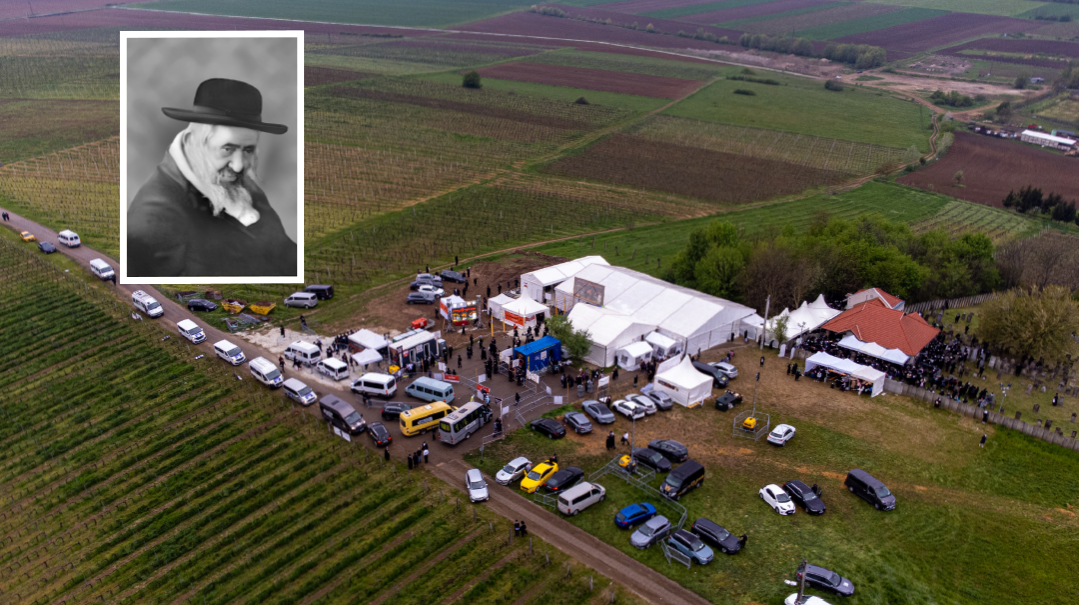Bird’s-Eye View

Today, you can go into a store and buy a drone, becoming your own state-of-the-art aerial photographer
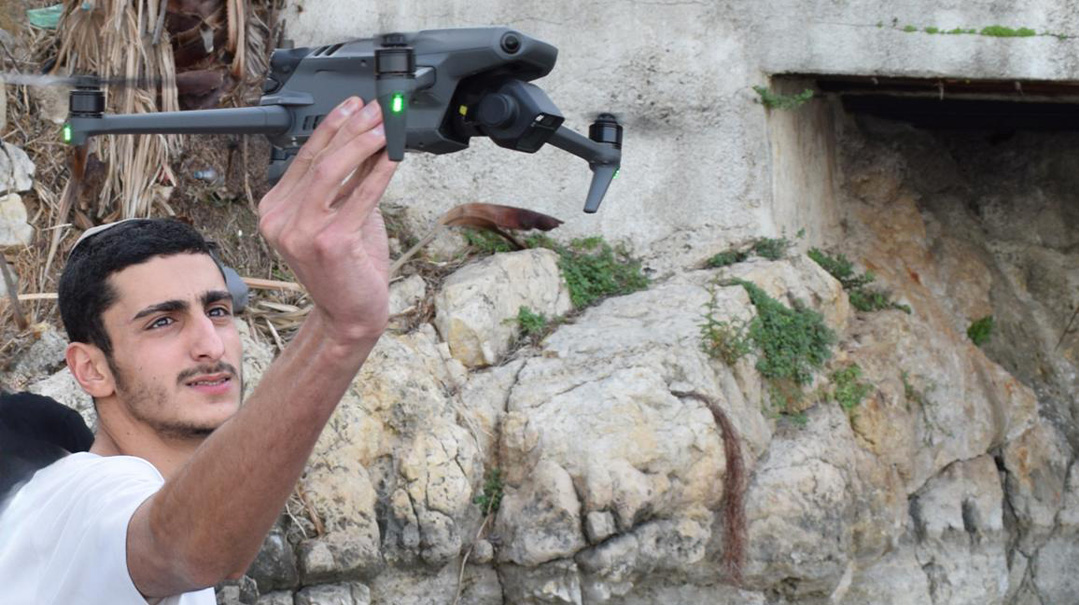
Photos: Shimon Sudri
A lot has changed since the invention of the camera in the 1800s, when ambitious shutterbugs decided to take pictures from the air by launching equipment into the sky with pigeons, balloons, and kites. Today, you can go into a store and buy a drone, becoming your own state-of-the-art aerial photographer. Just make sure it doesn’t fly away
While aerial photography is nothing new, up until quite recently, cameramen in the sky had to have access to full-size airplanes or helicopters in order to capture the world from a higher vantage point. Yet today, even cheap, store-bought drones can access a new view of life below, making any tech-savvy teenager into an aerial photographer.
Twenty-something Shimon Sudri, one of Israel’s most popular drone photographers, was that type of kid.
“I’ve always been drawn to both photography and technology,” he says. “For my tenth birthday, I begged my parents to buy me a starter drone, and during my teenage years, every time I saved a little money I’d upgrade to a more sophisticated model, until I was sending up the most advanced drones on the market. There are a lot of DIY groups and instruction videos around, and I’d take advantage of them all, so I’m basically self-taught.”
It’s a field that actually has its roots in an Israeli invention. The first modern-style drones, equipped with video cameras came on the scene in the 1980s, developed by Israeli engineers to monitor persons and places of interest by being able to hover over areas for hours at a time (the US soon adopted similar technology).
Just two decades later, a do-it-yourself drone culture emerged as the latest in remote-controlled flying mechanisms.
Like all technology that gets cheaper over time, today’s store-bought drones take high-quality stills and videos, making aerial photography more accessible and useful than it’s ever been before, in both the commercial and recreational sectors.
Because, as Shimon has learned quickly, technology may have changed over time, but everyone still wants to see the world from above.
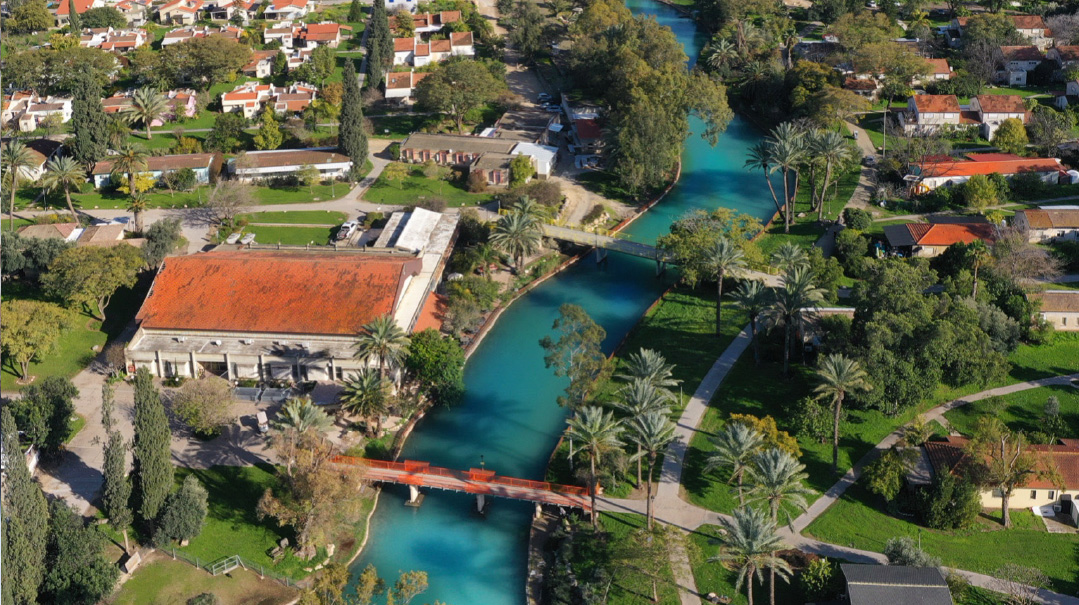
Rolling on the River
When altitude is on your side, landscapes can be transformed before your eyes. That’s what Shimon Sudri learned when he unwittingly found himself in the middle of a border battle between a town and a neighboring kibbutz. The members of Kibbutz Nir David in the Beit She’an Valley were sure that the adjacent flowing river, Nachal Ha’asi, belonged to them — until the nearby Beit She’an residents reminded them that nature doesn’t belong to anyone.
And then Shimon Sudri sent up his drone, capturing breathtaking scenes of the Asi that looked like they were taken as a set of vacation photographs in some exotic location abroad. The photos soon became an icon of the dispute over the river — and the bane of a few local kibbutzniks who didn’t let anyone near the site, but forgot that they had not yet registered ownership of the skies.
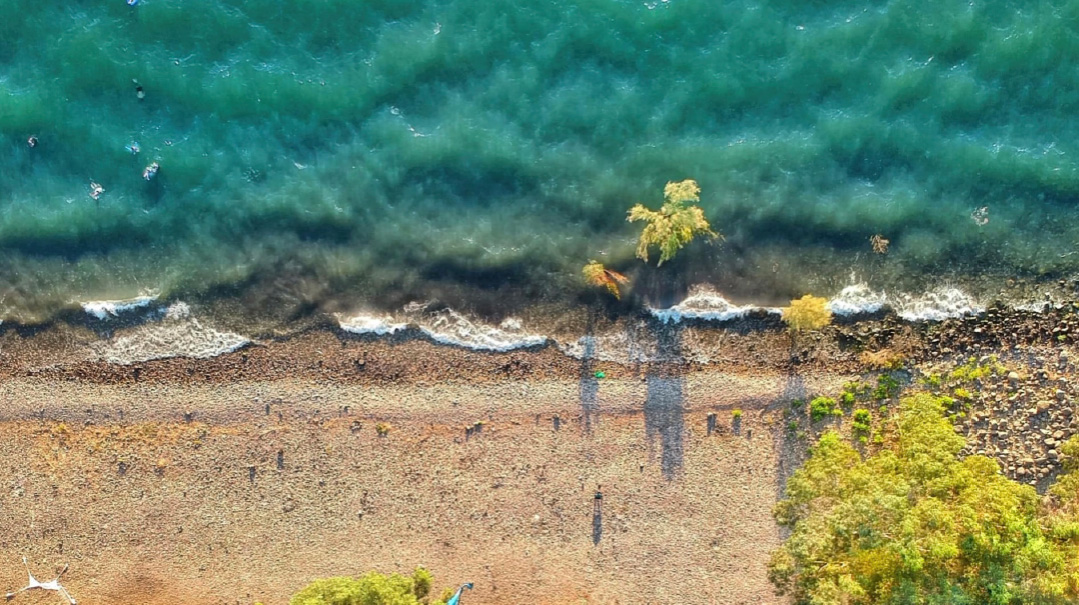
The Story You’re Telling
“I’ve put my work on a lot of social platforms,” says Shimon, “and the feedback has been really heartwarming — especially from people who can’t get around much or who are housebound or bedridden. They tell me how much they appreciate being able to see the beautiful views of Eretz Yisrael from such spectacular and unusual angles.”
When Shimon is thinking of a new angle to make his photos stand out among the masses of drone photos these days, he says he tries to think of why the angle and composition of the shot is something he wouldn’t get with a standard camera. What is the aerial view adding to the story he’s trying to tell?
From above, everything looks different. We all know what a beach looks like when standing on the ground, but when you look from above, all of a sudden, the pasuk from Yirmiyahu, “Samti chol gevul layam — I put sand as a boundary to the sea,” takes on a whole new meaning.
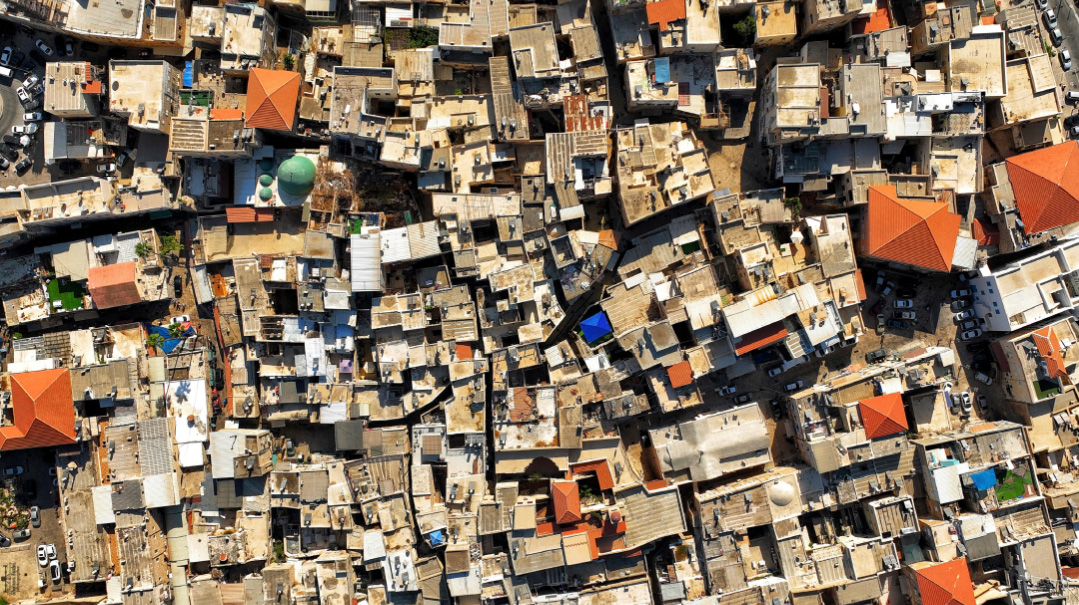
Stay Local
Not far from Shimon Sudri’s home in the Upper Galilee, his camera, climbing ever higher, captures breathtaking, powerful views.
“Many people think they have to travel abroad to see beautiful landscapes and views, but a lot of people who’ve seen my shots tell me that they’ve been living in Israel for decades and never realized the sheer beauty of the land,” Shimon says.
“And if you want to get a really great shot,” he continues, “try for sunset or sunrise to add an extra dramatic element to the picture. But, especially if you’re just a beginner, don’t fly your drone in high winds or cloudy conditions, because even if it isn’t raining on the ground, it might be misty up above, and you’ll wind up with condensation on the lens and unusable pictures.”
The Gemara tells of how Rabi Abba would kiss the stones of Acco. Looking at the entirety of this ancient port city from above — whose houses don’t look like they’ve changed too much since those times — it’s not hard to imagine the Tannaim and Amoraim, Rishonim and Acharonim, walking through these alleyways.
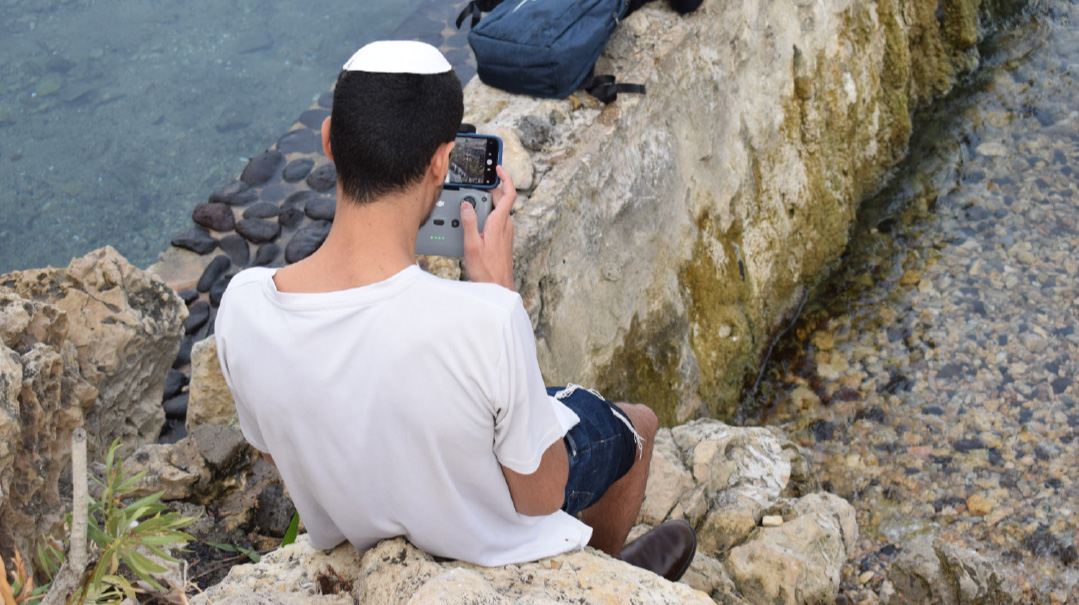
Cameras Are Still Cool
There’s definitely a lot more thrill and adventure in using a drone than a conventional camera, but sometimes the latter is the best way to get a candid shot in a hurry. Shimon Sudri is not only a commercial pilot of a drone camera, he’s a nature and scenery photographer as well, and you can even hire him out for events. But one day, as he finished photographing a wedding at the Jaffa Port, he couldn’t contain himself. He sent his drone up and brought down a few unusual shots. “It breaks up the routine,” he says of what happens to us when we see photos of familiar places suddenly taken from above.
Is this going to become the preferred mode of photography? Or is the manual control of a regular camera still the best way to get the clearest pictures? “Well, today most of my work is with drones, but I also do ground shots with cameras, videos, and even my phone,” he says. “I even have a little on-line session for tips on how to take great pictures if all you have is a phone.
“Because sometimes, especially if a lot of people are around, you don’t always want a drone. Sometimes if people notice them, it makes them nervous. They think they’re being spied on.”
Good drone equipment is relatively expensive, and many beginners wind up spending a lot of money and then losing their prized equipment. Did it ever happen that Shimon’s drone flew away or landed on top of a tall building and was gone?
“Generally, the really professional equipment today has a built-in GPS that remembers the exact place of the launch and will send the drone back to that place,” he explains. “And even if for some reason there’s loss of reception, there are sensors in every direction to make sure the drone doesn’t crash. But I’ll admit that when I was starting out, and before I had my state-of-the-art equipment, I crashed a few of my drones.”
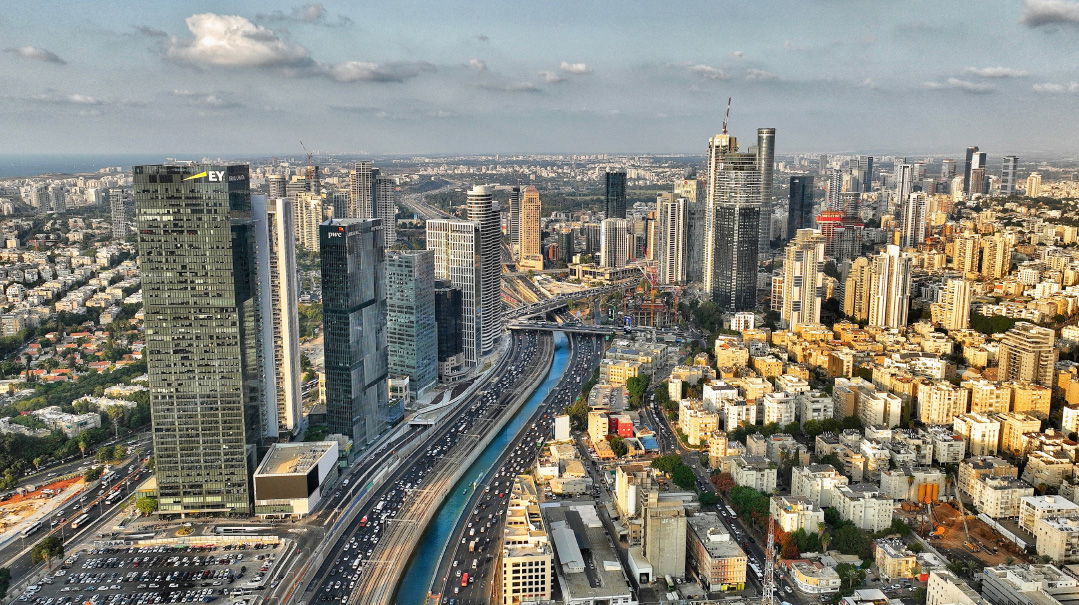
Quality Control
Shooting photos with drones can sometimes mean compromising on image quality. A high-quality consumer drone camera will top out around 20 megapixels and has a smaller sensor than traditional DSLR cameras.
“It’s true, you might not have the same level of control or sharpness as you would with a regular camera,” Shimon says, “but what you sacrifice in image quality, you gain in the sheer adventure of the photograph.”
Take an urban photo, for example. If you don’t go up too high, a moment before the skyscrapers actually scrape the sky, there is a certain stark beauty to the urban sprawl.
“Look at Tel Aviv,” Shimon says. “If you can get past the irritation of the traffic jams that are part and parcel of the Ayalon highway, you will discover that that the Ayalon River runs alongside it, giving a totally different feel to the congestion of the city. Sort of makes you think you’re in Venice.”
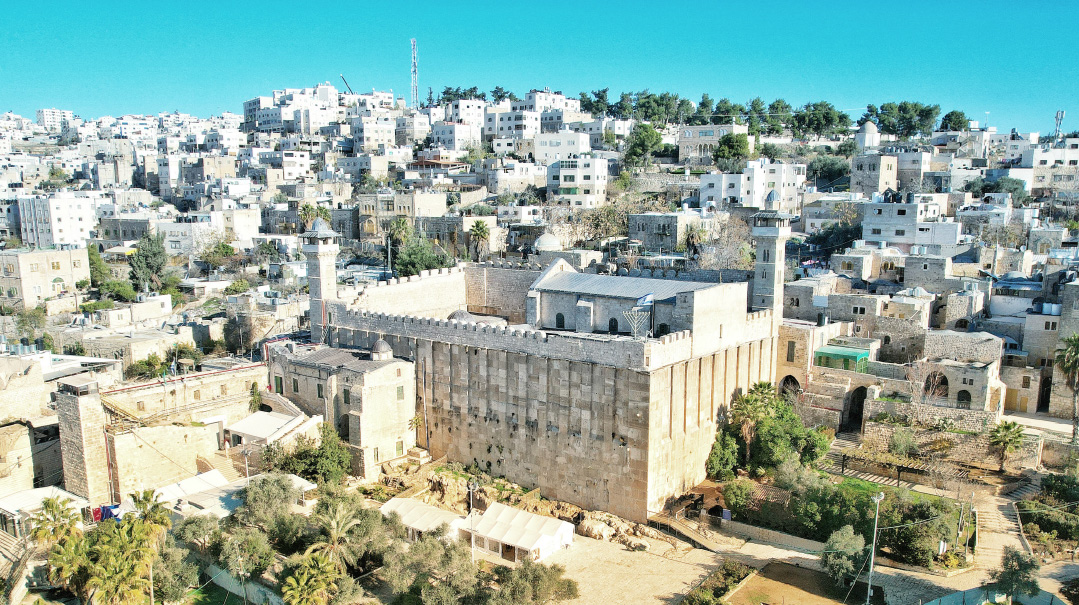
Follow the Rules
“I would love to be able to fly my drone over the Kotel, but even though I have a license from the Civil Aviation Authority, today it’s nearly impossible for a private photographer who is not also a journalist to get a permit for the area,” Shimon explains, describing the courses, written tests, and practical exams that his license entailed. “Because of the increased popularity of these drones, the Aviation Authority has tightened up regulations for where flying is permissible. There are permits and licenses and rules and regulations all over the world, but in Israel, those restrictions might be tighter as security concerns are paramount. You have to know where you’re allowed to send up a drone and where it’s illegal, and you also have to be considerate of the public and not become a public nuisance, because the drones do make a bit of noise.”
But one place where he got a permit was Chevron, even though, as a sensitive area, it required coordination and approval from the police, military, and other authorities.
“There’s something extra special about doing drone flights above places of religious and historical significance,” Shimon says. “When I did the flight in Chevron, over the Mearat Hamachpeilah, it was no comparison to a still camera in terms of feeling the energy and power of the place.”
Many people have photographed the Mearah, but Shimon wanted something else as well: to document the entire field of Machpeilah from above. “After all,” he says, “Avraham Avinu paid a lot for this place.”
Meir Friedman contributed to this report
(Originally featured in Mishpacha, Issue 950)
Oops! We could not locate your form.



